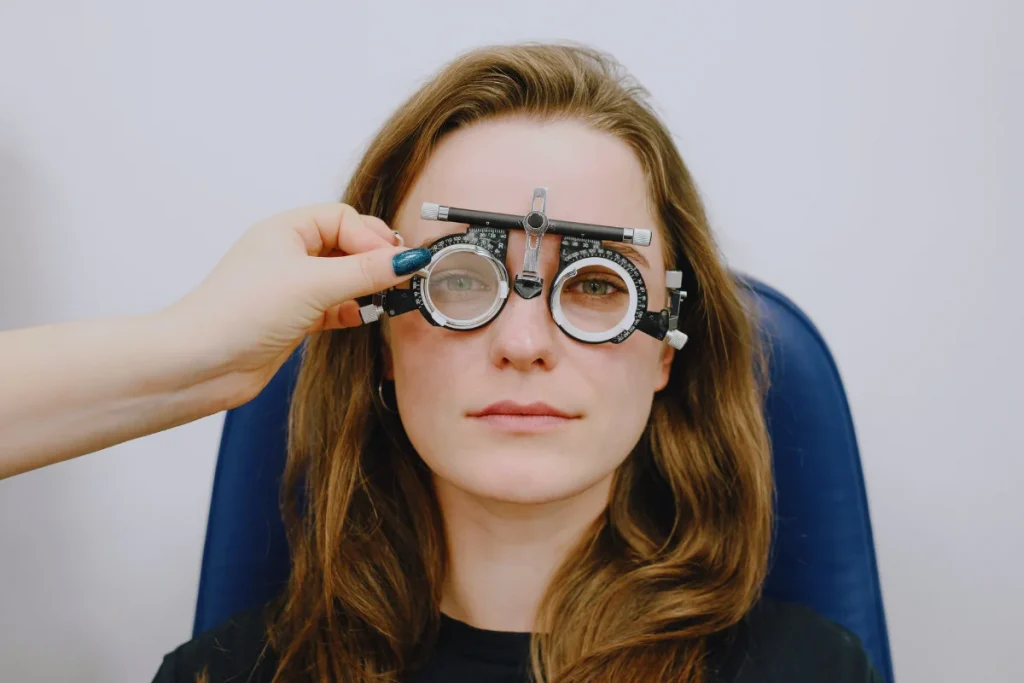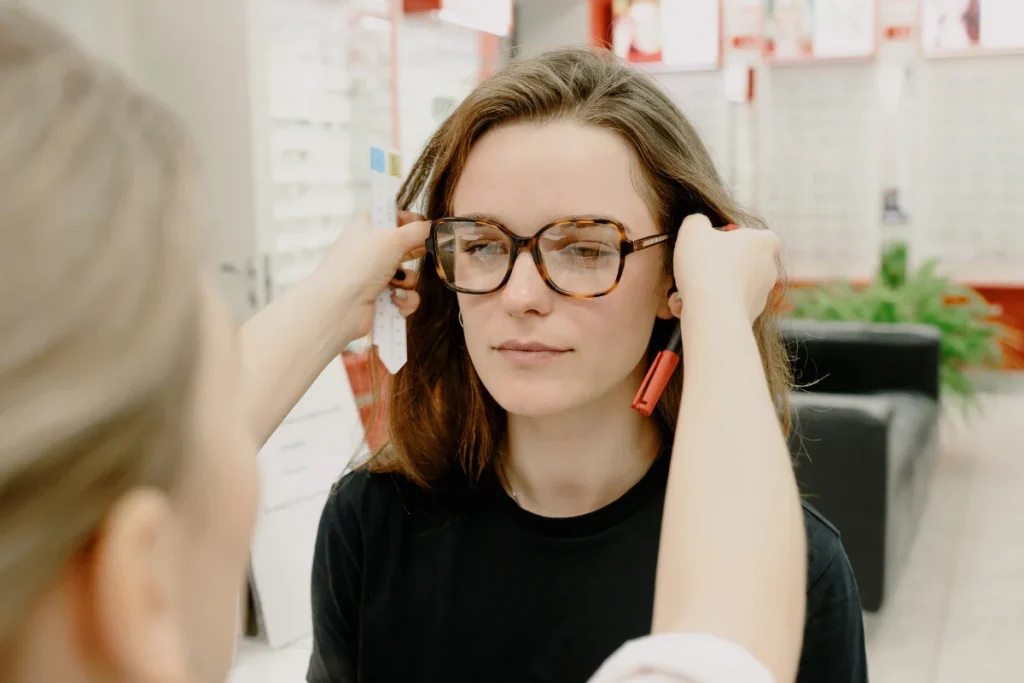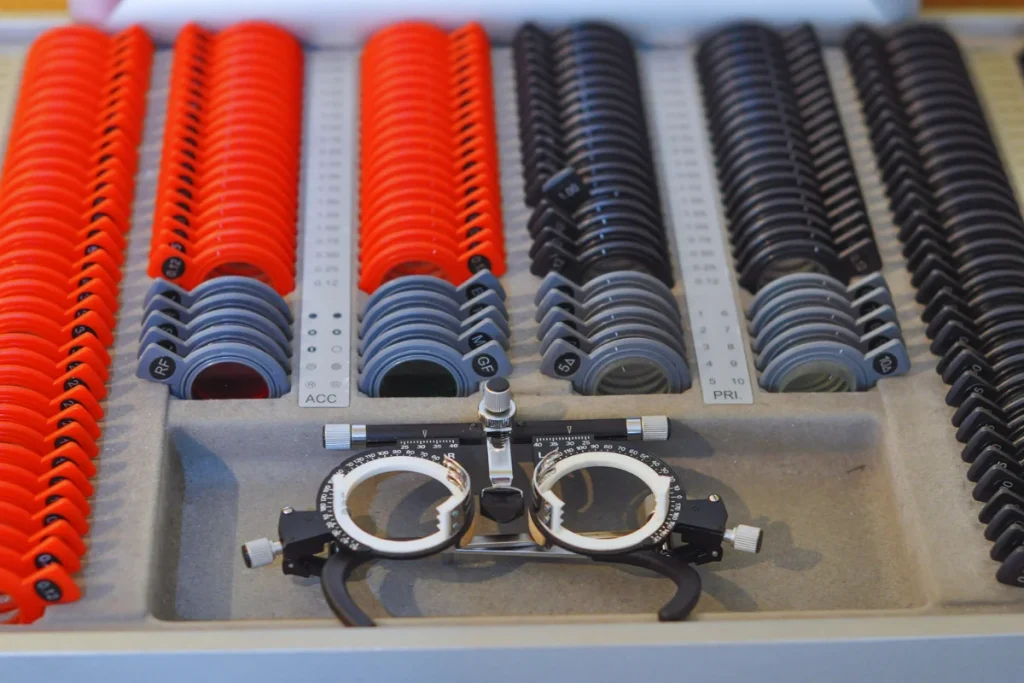A diopter lens may sound technical, but the idea is quite simple. It is a lens that has a specific optical power, which determines how much it can bend light to focus an image. The strength of a diopter lens is measured in a unit called a diopter. This small measurement plays a big role in how we see things, whether through a camera, a pair of glasses, or a magnifying tool.
Diopter lenses are used in many areas of daily life and professional work. In photography, they can be added to a camera lens to capture close-up shots without needing an expensive macro lens. In eyewear, they are the basis of every prescription for glasses and contact lenses. Magnifying tools help jewelers, watchmakers, and hobbyists see fine details clearly.
Understanding diopters is helpful whether you are a photographer trying to get sharper images or someone who wants clear vision through glasses. Have you ever noticed a small dial next to your camera’s viewfinder that sharpens the image for your eyes? That is a diopter adjustment in action. Knowing how it works can make a big difference in both image quality and visual comfort.
What is a Diopter Lens?
A diopter lens is a lens with a specific optical power, measured in diopters, which is represented by the symbol D. The diopter value tells you how strongly a lens can focus light. This value is calculated based on the lens’s focal length, which is the distance at which light rays meet to form a clear image.
One diopter is equal to a focal length of one meter. If a lens has a power of +2 diopters, it has a focal length of 0.5 meters. If it has 3 diopters, it is designed for nearsighted vision correction.
Diopter lenses appear in different fields. In photography, they are used as close-up filters that allow you to shoot macro-style images without buying a special lens. Cameras also have built-in diopter adjustments in the viewfinder so you can focus clearly even without wearing glasses.

In eyewear, diopters represent the strength of your prescription lenses, whether they are glasses or contact lenses. In magnification tools like microscopes, binoculars, and reading glasses, diopter values control how much detail you can see.
In short, a diopter lens is not just for scientists or photographers. It is an everyday tool that helps us see clearly and capture better images.
Understanding the Diopter Measurement System
The diopter measurement system is based on a simple formula: diopters (D) are equal to 1 divided by the focal length of the lens in meters. This means that a lens with a focal length of one meter has a power of 1 diopter. A lens with a focal length of half a meter has a power of 2 diopters.
Diopters can be positive or negative. Positive diopters (+) are used for lenses that converge light, which helps people who are farsighted see clearly. They are also used in magnifying lenses, close-up filters for photography, and reading glasses. For example, +2.0D reading glasses bring objects into focus at about half a meter from your eyes.
Negative diopters (–) are used for lenses that diverge light, which helps people with myopia or nearsightedness. For example, a –3.0D eyeglass lens allows someone with moderate myopia to see distant objects clearly.
Understanding these numbers can make a big difference when buying eyewear, adjusting your camera, or choosing a magnifying tool. Instead of guessing, you will know exactly how much optical power you need to get a sharp and comfortable view.
Whether you are reading fine print, capturing tiny details in a photo, or looking at distant scenery, the right diopter value makes all the difference.
Types of Diopter Lenses
Diopter lenses come in different forms depending on their purpose. While they all measure optical power in diopters, their applications vary widely.

Photography diopters
- Close-up filters are add-on lenses that let photographers take detailed shots of small subjects, such as flowers or insects, without needing a dedicated macro lens.
- Viewfinder diopter adjustments are small controls built into a camera to help the photographer see a sharp image through the viewfinder, even without wearing glasses.
Eyewear diopters
- Single vision lenses are made with one diopter value to correct either nearsightedness or farsightedness.
- Progressive lenses have multiple diopter strengths in one lens, allowing clear vision at near, intermediate, and far distances without visible lines.
- Contact lenses also use diopter measurements to match a person’s prescription needs.
Magnification diopters
- Magnifying lamps are often used for crafting, reading, or inspection work. Their lenses have specific diopter values to enlarge small details.
- Binoculars and telescopes often include diopter adjustments to match the vision differences between a user’s eyes.
Table: Types of Diopter Lenses
| Type | Common Application | Typical Diopter Range |
| Close-up filter | Macro photography | +1D to +10D |
| Viewfinder adjustment | Camera focusing | –3D to +3D |
| Single vision lens | Correcting vision | –12D to +6D |
| Progressive lens | Multi-distance vision correction | Varies per section |
| Contact lens | Correcting vision | –12D to +8D |
| Magnifying lamp | Crafting, inspection | +2D to +8D |
| Binocular/telescope adjustment | Precision focusing | –5D to +5D |
Diopter Lenses in Photography
In photography, diopter lenses are often used as close-up filters to capture detailed, macro-style images without investing in a costly macro lens. These filters screw onto the front of a camera lens and reduce the minimum focusing distance, making small subjects appear larger.

Common strengths include +1D, +2D, and +4D. A +1D filter provides a mild magnification, ideal for slightly closer shots. A +2D filter gives a stronger effect, while a +4D filter allows very close focusing for extreme detail shots.
Advantages
- Affordable compared to dedicated macro lenses
- Lightweight and easy to carry
- Quick to attach and remove
Disadvantages
- Possible image softness at the edges
- Reduced depth of field, which can make focusing challenging
Tips for best results
- Use a tripod to avoid camera shake
- Keep the subject in the center for sharper detail
- Combine with good lighting to enhance clarity
With the right approach, photography diopters can be a budget-friendly way to explore macro photography while keeping gear lightweight and portable.
Diopter Adjustment in Cameras and Optics
Most cameras with a viewfinder have a built-in diopter adjustment. This is usually a small dial or slider located next to the viewfinder. Its job is to fine-tune the focus of the viewfinder image to match your eyesight.
This feature is important for photographers who wear glasses, as well as those who do not. Without proper adjustment, the scene you see in the viewfinder might appear sharp, but the actual photo could turn out blurry.
To set your camera diopter, point the camera at something with clear details, such as text or a patterned surface. Look through the viewfinder and adjust the diopter control until the details appear crisp and clear without straining your eyes.
Similar diopter adjustments exist in other optical tools like binoculars and microscopes. In binoculars, the diopter setting helps match the focus for each eye. In microscopes, it ensures sharp focus for both eyes during extended viewing.
Diopter Lenses in Vision Correction
In eyewear, diopters are the measurement used to describe the strength of a prescription lens. The number is determined during an eye exam and written on your prescription sheet.
An optometrist measures how much correction your eyes need to focus light properly. For example, a prescription of +1.50D indicates mild farsightedness, where objects close to you may appear blurry. A prescription of –4.25D indicates moderate myopia, where distant objects are harder to see clearly.
Wearing lenses with the wrong diopter strength can cause eye strain, headaches, or blurred vision. That is why it is important to get regular eye exams and update your prescription when needed.
Whether it is in glasses, contact lenses, or reading glasses, the correct diopter value ensures that light enters your eyes in the right way, resulting in sharp, comfortable vision.
How to Choose the Right Diopter Lens
Choosing the right diopter lens depends on your purpose.
For photography, think about your subject distance and how much magnification you need. If you want gentle close-ups of flowers, a +1D or +2D filter may be enough. For extreme detail shots, you may prefer +4D or higher. Always consider the type of lens you already have and whether the diopter will fit it.
For eyewear, a professional eye exam is essential. Only an optometrist can accurately measure your diopter strength and make sure your lenses match your vision needs. Self-guessing can lead to discomfort and eye strain.
For magnifying tools, choose the diopter strength based on your task. Lower diopters are good for reading and general work. Higher diopters are better for precision tasks like jewelry making, electronics repair, or medical inspection.
Quick tips for buyers
- Match the diopter to your specific activity
- For photography, check compatibility with your camera lens size
- For eyewear, never skip a professional prescription
- For magnifying tools, balance magnification with working distance for comfort
Conclusion and Takeaways
Diopter lenses play an important role in many areas of life. They help photographers capture close-up details, give clear vision to people with prescription glasses, and provide magnification for precision tasks.
Understanding diopter values means you can choose the right tool for your needs. In photography, this might be the perfect close-up filter. In eyewear, it means sharp and comfortable vision. In magnifying tools, it ensures you can work with precision and ease.
Whether you are adjusting your camera’s viewfinder or getting a new pair of glasses, knowing your correct diopter value can save you time, money, and frustration. Explore your options and choose the diopter lens that best matches your purpose. Clearer vision and sharper images are within your reach.
Common FAQs
Is diopter the same as magnification?
Not exactly. Diopter measures optical power, while magnification describes how much larger an object appears. They are related, but not identical.
Can I stack diopter lenses for stronger magnification?
Yes, you can, but stacking may cause image distortion and reduced clarity.
Do diopter lenses affect image quality?
They can. Higher diopters may soften the edges of an image or reduce depth of field. Quality also depends on the lens material and coating.
What’s the maximum diopter for reading glasses?
Most over-the-counter reading glasses go up to +4.0D. Higher strengths are usually custom-made by an optician.
Can diopter settings replace glasses in photography?
They help adjust the viewfinder for your eyesight, but they do not replace prescription glasses for everyday vision correction.


